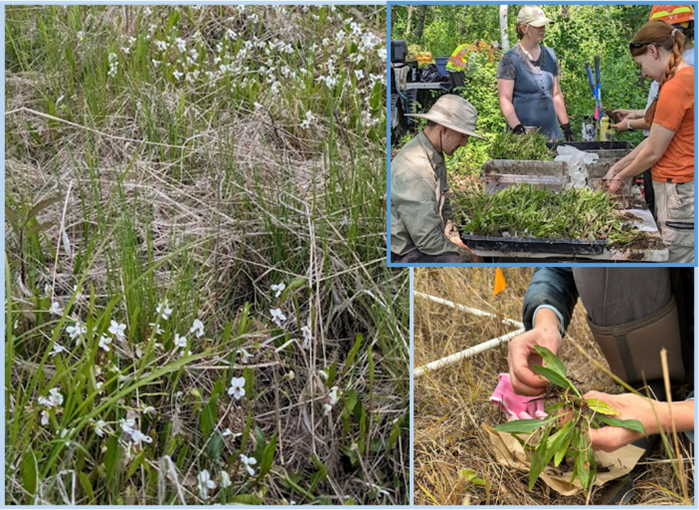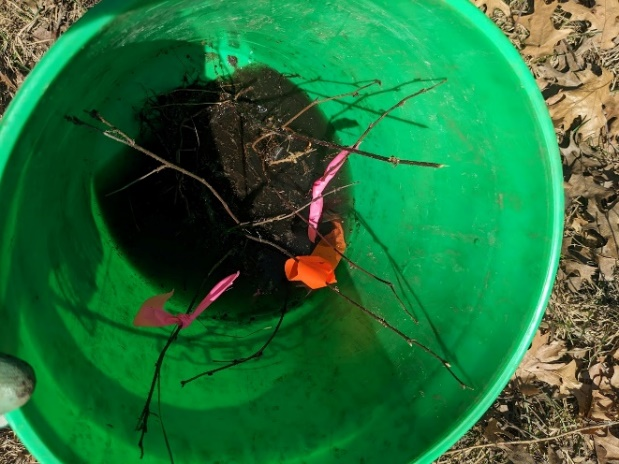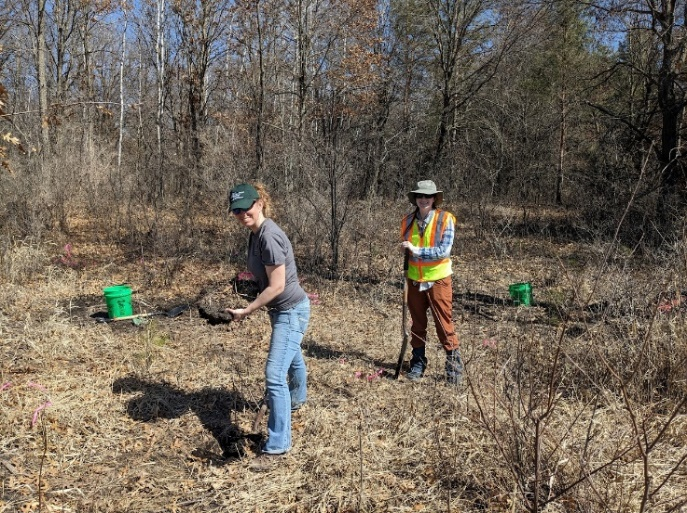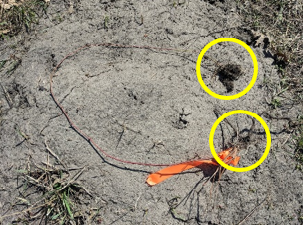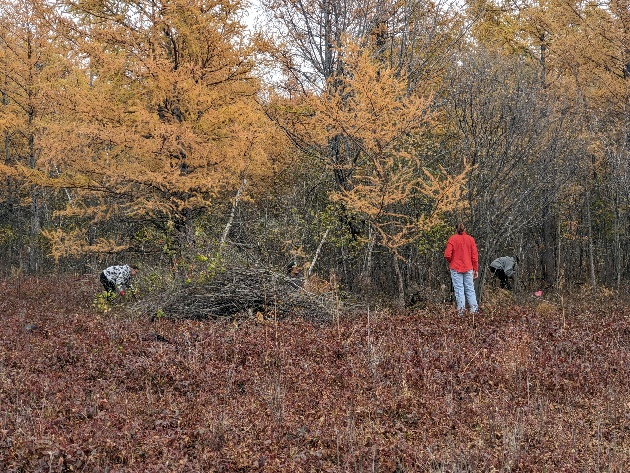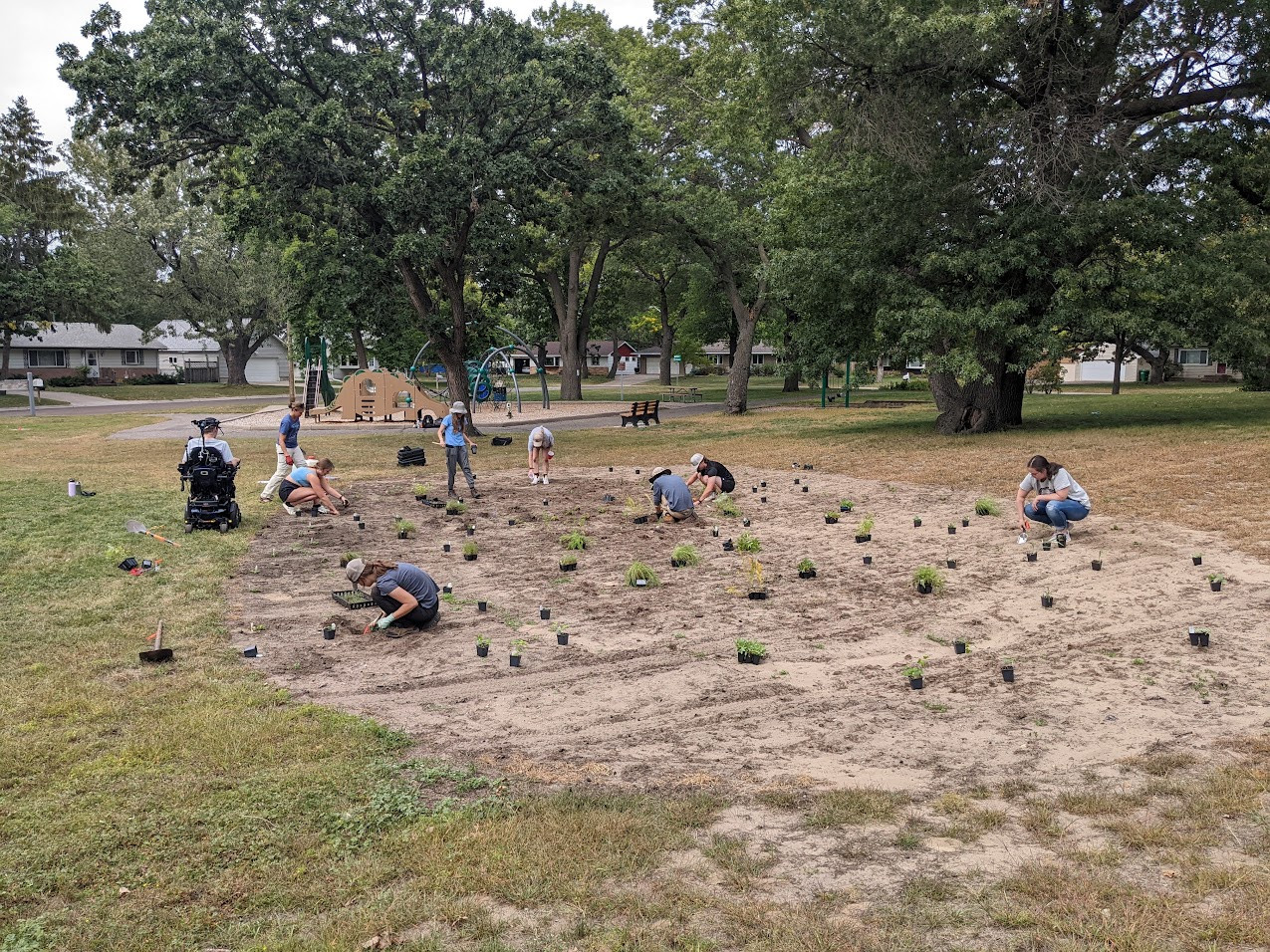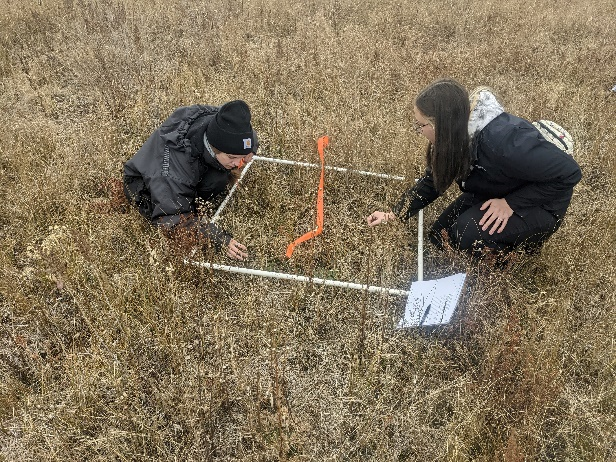The Anoka Sand Plain Rescue team salvaged rubus fulleri just days after the snow melted and the take permit was issued. A recent development was designed to avoid impacts to natural/uncropped wetlands and leave a natural area that contains most of the rare plants on the site. However, a subpopulation of rubus fulleri was to be impacted since there was no feasible way to avoid the areas due to construction constraints.
Staff from ACD, Critical Connections Ecological Services and the MN Landscape Arboretum salvaged whole plants and cut stems/canes. Plants were taken to the MN Landscape Arboretum where they will be potted. Stems/canes were cut into pieces ensuring each piece included a bud and was potted. The Arboretum is experimenting with different propagation techniques and will keep the rubus on-site until the fall. At that time, plants will be transferred to ecologically appropriate protected site where they can be monitored for survival and growth.
Root tipping – yellow circles show rooting at the base and the tip
Rubus fulleri was designated as a state-threatened species in 2013. In Minnesota, this species is restricted to the shallow wet meadows of the Anoka Sand Plain. Following a century of agricultural and residential development in this region, few high quality examples of R. fulleri habitat are known in the state. Rubus fulleri is most threatened by habitat loss, with populations becoming more isolated and fragmented. Active management, including prescribed fire and invasive species control is needed to maintain a viable R. fulleri population.
Rubus Anatomy:
Cane: a biennial, woody shoot which grows out of the perennial crowns and roots
Primocane: first year cane, mainly comprised of vegetation growth
Floricane: the same cane in the second year, bearing the flowers and fruits, then dies back
Rubus fulleri traits include canes that arch and trail along the ground. They also root tip, meaning the tip of the trailing cane grows roots into the ground.
For more information contact Carrie Taylor at 763.434.2030 ext.190 or This email address is being protected from spambots. You need JavaScript enabled to view it..
